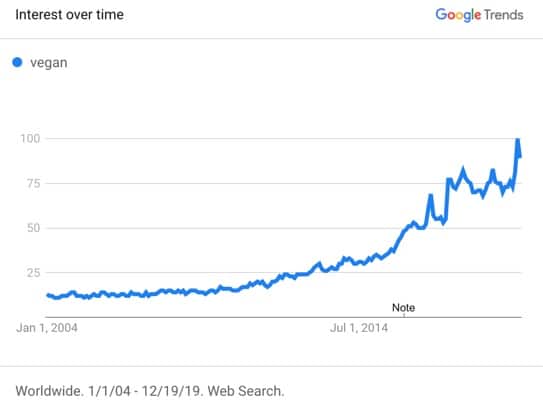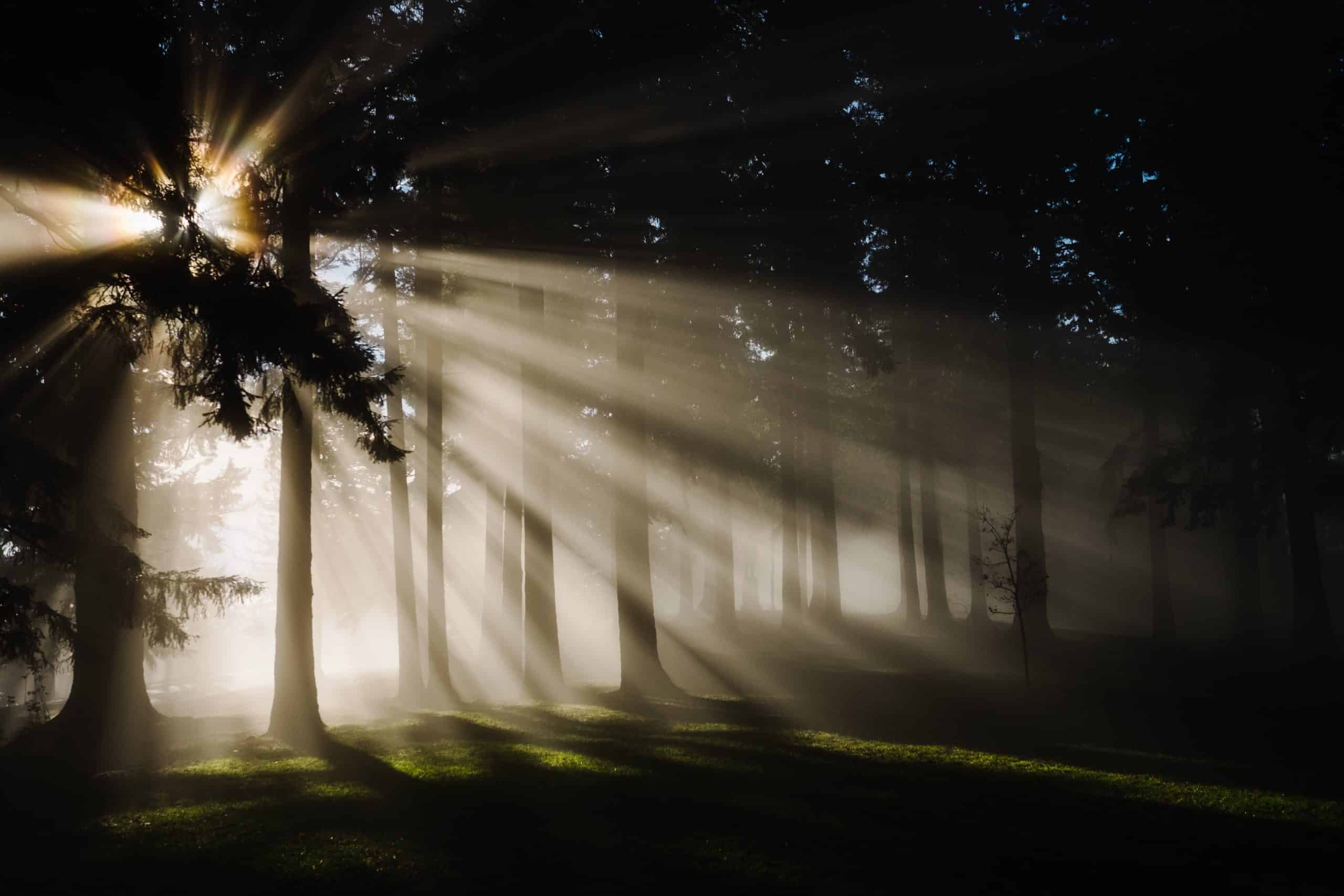Whoa. What a year.
For once, environment issues have been prominent in the global agenda. Unless you have been living under a rock, you can’t have lived 2019 without hearing about climate change, school strikes and the biodiversity crisis.
Although the Conservation Optimism movement supports solutions-based messaging and optimistic viewpoints, we know that these have to go alongside truthful depictions of the magnitude of the threats our environment is facing.
The crisis messaging which has taken off this year has spurred global activism, which gives us hope, but we want to make sure that this support maintains momentum and people continue to be engaged. This is where optimistic messaging comes in as a long-term solution to keeping people engaged and hopeful for the future- so 2020 is set to be a big year!
So, without any further delay, let’s have a look at the stories which gave us reasons for optimism in 2019.

“Hey hey, ho ho, climate change has got to go!”
“Sea levels are rising. So are we!”
“You’ll die of old age. I’ll die of climate change.”
2019 has seen a huge rise in environment protests all across the globe, from school strikes inspired by Greta Thunberg, Extinction Rebellion’s demonstrations, and climate strikes demanding radical action ahead of the latest UN climate summit in Madrid.
This activism has catalysed conversations about behaviour change, policy change and corporate responsibility. Although the COP25 meeting has been hailed as a disappointment and ‘failure of leadership’, 1,247 jurisdictions in 26 countries have declared a climate change emergency – representing 798 million citizens.
In the UK, research has suggested that concern about climate change is now at a record high, with three in four people thinking Britain is already feeling the effects, and more than half people polled (54%) saying climate change would affect how they vote. This is maybe what spurred ‘the greenest campaign in UK election history’ although, as the winning party was not among the most ambitious in their environment targets, there is still some work to be done.

Vegan is no longer a scary word (for most people…).
As land-use change for livestock farming or agriculture for livestock feed is a huge contributing factor to habitat loss, lifestyles which offer alternatives to industrial-scale meat and dairy production (reduced meat, vegetarian and vegan) are only going to become more important.
From a fringe movement, veganism has now entered the mainstream, with messaging and associations becoming far more positive in popular media, reflecting the health, ethical and environmental benefits. In response, this year we have seen major food companies from supermarkets to fast food chains offering more plant-based meat-alternatives than ever before (Greggs, KFC, McDonalds, Starbucks to name a few).
Google Trends also shows how interest has risen in the past ten years in the search term ‘vegan’:


As of December 2019, the World Database on Protected Areas states that 15% of land and 7.6% of the ocean is under protection. This falls short of the Convention on Biological Diversity’s (CBD) Aichi Biodiversity target that by 2020, 17% of terrestrial and 10% of marine habitats are covered by protected areas.
However, there have been many new protected areas created this year that we can still celebrate:
- The Fiji government has made a bold commitment to designate marine protected areas (MPAs) across 30% of its ocean spaces.
- The 12,000-year-old Dipsiz (Fathomless) Lake in Turkey will be filled with water again and declared as a protected area.
- Afghanistan has established the Bamyan Plateau Protected Area, a spectacular landscape of over 2,600 square miles nested in the remote central Hindu Kush Mountain Range.
- The 10,000-square kilometre sacred site of Ts’udé Nilįné Tueyata has become the Fort Good Hope’s newest protected area.
- The nearly 170,000 square miles of ocean around Ascension Island, one of the world’s most pristine and biodiverse ocean ecosystems, will soon be officially protected.
- The 5,860-acre Bicundinho Wildlife Refuge has been declared in Brazil and is the first to protect the Critically Endangered Marsh Antwren’s habitat.
- 20 new marine sites were declared protected in South Africa’s coastal waters.

Species discoveries are a huge source of nature’s inspiration among wildlife-lovers and conservationists. No matter how much we think we know, there is still so much more to learn and more innovation in evolution than we could ever dream of.
In 2019, new species were discovered across the board: mammals, fish, amphibians, reptiles, plants, fungi, invertebrates… the list goes on. But we’ve selected some highlights for you:
- Greta Thunberg’s ‘animated fullstop’ beetle.
- A subterranean snakehead fish named after Gollum in Lord of the Rings.
- Six (maybe more) species of bryozoans (a type of aquatic invertebrate) from Amazonia.
- Velvet spider named after Lou Reed (from the rock band the Velvet Underground) found in the only desert in mainland Europe.
- A cat-eyed cardinalfish.
- A sea slug with warty red protrusions.
- New-to-science skate, Dipturus lamillai, from the Falkland Islands.
- A girdled lizard found on the second highest mountain peak in Angola.
- A statuesque new flowering plant from Mexico.
- A deep-sea coral from the California coast.
- The first – and only – species in a new family of “ant-worshipping” spiders.
- Three new species, a new genus and a new subfamily of snakes from across India.
- Four new species of frog from one of the wettest regions on Earth.
- Three new geckos on a remote volcano in the Galapagos.
- Rare snowdrops in red clay soil, Turkey (and many more plant and fungal species were identified by Kew experts).

Perhaps even more important and cause for optimism than new species discoveries is rediscoveries – when species that we assume are extinct are found once more, surviving beyond the human eye, sometimes for decades at a time.
It is a heart-breaking moment when ‘assumed extinct’ is declared for a species, but these instances where plants and animals lost to science are found once more can give us hope that local conservation efforts can have a bigger impact than we even realise.
- In a story which seems to have come straight out of an ambitious novel, scientists exploring the “Lost City of the Monkey God” in the Mosquitia rainforest of Honduras rediscovered three species thought to be locally extinct: the pale-faced bat, the false tree coral snake and a tiger beetle.
- The ‘holy grail’ of bee discoveries: Wallace’s giant bee (the world’s largest with a wingspan of more than 6cm) was rediscovered in the North Moluccas in Indonesia.
- Rabbit-sized, deer-like species of fanged chevrotain (like a tiny deer) was rediscovered in Vietnam.
- The Sri Lanka legume was rediscovered this year after a century-long disappearance.
- After remaining undetected by scientists for nearly 30 years, the indigenous Arhuaco people of the Sogrome community, which considers the harlequin toad sacred and an integral part of its culture, permitted researchers from a Colombian conservation group to go and photograph the toads and share it with the wider scientific community.
- A living female member of species of the Fernandina giant tortoise (not seen in more than 110 years and feared to be extinct) was found in a remote part of the Galápagos island of Fernandina.
- A fountain bush with beautiful hanging flowers that was last recorded more than 200 years ago was rediscovered in Winterhoek mountains of South Africa.
- A rusty-crowned Colombian songbird called the Antioquia Brushfinch was documented in the wild for the first time since 1971.

Finally, we have to mention our team’s highlight: the Conservation Optimism summit in Oxford.
More than 230 people came together from over 30 countries to learn, share, network and enjoy within the Conservation Optimism community. We also held our first film festival, for which hundreds of short films were submitted and 22 were shortlisted and screened.
We were honoured to host five experts to address our audience in five plenaries, which were also live-streamed on our social media: community conservationist Brisetha Hendricks, neuropsychologist Laurie Parma, conservation technologist Alex Dehgan, conservation communicator Robin Moore and climate change communicator Alice Bell.
Second to the summit itself, our team loved reading the feedback from our delegates, 98% of whom said they would attend another summit and many left lovely comments about how inspired they felt after. Here are some of our favourites:
“A fantastic opportunity to learn from a wide variety of conservationists, network and catch up with friends and former colleagues, and broaden my horizons as a conservationist.”
“Amazing summit with people with different backgrounds, interesting sessions, enthusiastic atmosphere.”
“Excellent! I left feeling energized and inspired from all of the great sessions and presentations I attended.”
We’re looking forward to growing the Conservation Optimism community and hearing more stories from you in 2020!
Happy Holidays from all of us at Conservation Optimism!


